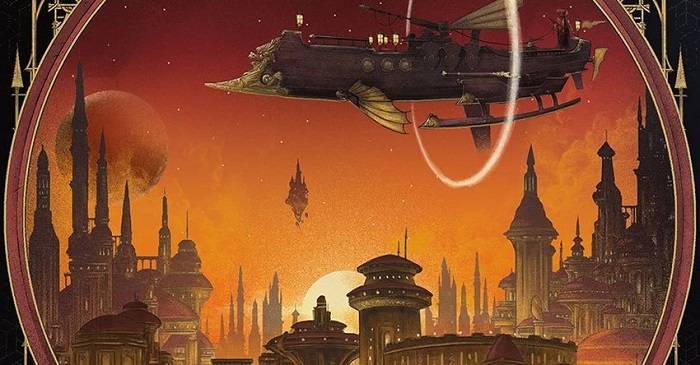
The Sarlonan Migration to Western Khorvaire
Population Migration / Travel
The migration of humans to Khorvaire from Sarlona continues.
At the same time as the kingdoms of Sarlona were falling under the sway of the Inspired, the second wave of Sarlonan human migrants to reach Khorvaire sailed east across the Barren Sea under well-known circumstances, in contrast to Lhazaar’s expedition fifteen hundred years before. These Sarlonans were refugees fleeing the Sundering of the Sarlonan nations and the rise of the Inspired’s new empire in Riedra. The Riedrans had pushed east into the forests of the Empire of Nulakesh, then beyond, leading many eastern Sarlonans from the Twelve Kingdoms to flee the Inspired’s vision of a new utopia. These Sarlonan men and women landed on Khorvaire’s western shores, spreading into the Shadow Marches where they remain today and where they eventually interbred with the native orc clans to create the first half-orcs. Unfortunately, a few expeditions of these Sarlonan refugees lost their way and were shipwrecked on the northwestern shores of Khorvaire in the region known as the Demon Wastes. In time, these poor people would become twisted by the fiendish taint of the Wastes and become the second of the two groups of barbarians who called the Demon Wastes home: the Carrion Tribes. While the noble clans of orcs known as the Ghaash’kala wandered the canyons of the area of the Wastes called the Labyrinth, the Carrion Tribes preferred to make their homes as nomadic hunter-gatherers on the rocky plains west of the Labyrinth’s deep badlands. The members of the Carrion Tribes were the more numerous of the two barbarian hordes of the Wastes and consisted of vicious human savages who worshipped the malevolent fiendish spirits that haunted the region. Over the centuries a handful of different tribes emerged, each following a different fiendish Overlord who lay imprisoned in the depths of Khyber beneath the Wastes. No matter which demon lord they pledged allegiance to, the Carrions were bloodthirsty nomads known to slaughter any strangers they came across—including the members of other Carrion Tribes. While they worshipped the ancient fiends, the Carrion Tribes also feared the ancient rakshasa ruins scattered across the plains of the Demon Wastes and so avoided such locations. Occasionally a tribe attempted to break through to the Eldeen Reaches, which resulted in a brutal conflict with the Ghaash’kala clans in the Labyrinth. The Carrion Tribes were extremely technologically and culturally primitive and generally used hide armor and weapons made of stone or wood, though a few possessed poorly maintained equipment scavenged from their victims. The Carrions practiced ritual scarring and mutilation; each tribe used distinctive techniques designed to give its warriors the features of fiends. The Carrion Tribes worshipped the fiendish powers that dwelled within the Wastes—the imprisoned rakshasa Overlords, the night hags, and the lesser fiends and dark spirits that dwelled in the shadows. Barbarians were seen as sacred warriors who underwent a form of sacred demonic possession when they raged in battle. Each tribe has slightly different beliefs, depending upon the nature of the fiend they revered. But all the tribes sought to water the Wastes with the blood of their enemies— something that the rakshasas of Ashtakala found most entertaining. Two of the most infamous of the later Carrion Tribes were the Moon Reavers and the Plaguebearers. While most of the Carrion Tribes worshipped the rakshasa Overlords and their lesser rakshasa and demonic servants, the Moon Reavers revered the night hags of the Wastes—the foul female fey who spread fear by the dark of the moon across the world. This tribe was made up mostly of barbarians, but because it specialized in terror tactics and guerrilla warfare, a number of rogues were also among the membership. Whenever possible, the Moon Reavers prefer to stalk isolated prey using methods designed to frighten them severely prior to making a kill. They draw this fear out for as long as possible, reveling in the terror of their victims. Clan members make masks and other decorations using the bones and skin of their victims. They file their teeth and let their nails grow long in emulation of the dark fey they so admire. The Plaguebearers revered an imprisoned fiendish force of filth and pestilence. Its members sought to turn the power of their lord against their enemies. Plaguebearers smeared their weapons with dung to infect their foes with vile fevers brought on by the filth. The members of the tribe were typically covered with weeping open sores and angry welts from various infections, but they were remarkably resistant to the effects of diseases and poisons and never were seriously impaired by their myriad afflictions.
